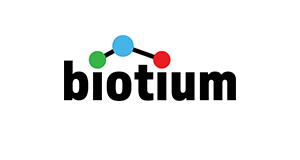CD99 / MIC2 (Ewing's Sarcoma Marker)(12E7 + MIC2/877), CF740 conjugate, 0.1mg/mL
CD99 / MIC2 (Ewing's Sarcoma Marker)(12E7 + MIC2/877), CF740 conjugate, 0.1mg/mL
SKU
BTMBNC740878-500
Packaging Unit
500 uL
Manufacturer
Biotium
Availability:
loading...
Price is loading...
Description: This antibody recognizes a sialoglycoprotein of 27-32 kDa, identified as CD99, or MIC2 gene product, or E2 antigen. MIC2 gene is located in the pseudo-autosomal region of the human X and Y chromosome. MIC2 gene encodes two distinct proteins, which are produced by alternative splicing of the CD99 gene transcript and are identified as bands of 30 and 32 kDa (p30/32).Although its function is not fully understood, CD99 is implicated in various cellular processes including homotypic aggregation of T cells, upregulation of T cell receptor and MHS molecules, apoptosis of immature thymocytes and leukocyte diapedesis. CD99 is expressed on the cell membrane of some lymphocytes, cortical thymocytes, and granulosa cells of the ovary. Most pancreatic islet cells, Sertoli cells of the testis, and some endothelial cells express this antigen. Mature granulocytes express very little or no CD99. MIC2 is strongly expressed on Ewing's sarcoma cells and primitive peripheral neuroectodermal tumors.
Product Origin: Animal - Mus musculus (mouse), Bos taurus (bovine)
Conjugate: CF740
Concentration: 0.1 mg/mL
Storage buffer: PBS, 0.1% rBSA, 0.05% azide
Clone: 12E7 MIC2/877
Immunogen: Human acute lymphocytic leukemia T-cells (12E7); Recombinant human MIC2 protein (MIC2/877)
Antibody Reactivity: CD99/MIC2
Entrez Gene ID: 4267
Z-Antibody Applications: IHC, FFPE (verified)
Verified AB Applications: IHC (FFPE) (verified)
Antibody Application Notes: Flow cytometry: 5-10 uL/million cells/Higher concentration may be required for direct detection using primary antibody conjugates than for indirect detection with secondary antibody/Immunohistochemistry (formalin-fixed): 1:100-1:200 for 30 minutes at RT/Staining of formalin-fixed tissues requires boiling tissue sections in 10 mM citrate buffer, pH 6.0, for 10-20 minutes followed by cooling at RT for 20 minutes/Immunofluorescence 1:100-1:200/Optimal dilution for a specific application should be determined by user
Product Origin: Animal - Mus musculus (mouse), Bos taurus (bovine)
Conjugate: CF740
Concentration: 0.1 mg/mL
Storage buffer: PBS, 0.1% rBSA, 0.05% azide
Clone: 12E7 MIC2/877
Immunogen: Human acute lymphocytic leukemia T-cells (12E7); Recombinant human MIC2 protein (MIC2/877)
Antibody Reactivity: CD99/MIC2
Entrez Gene ID: 4267
Z-Antibody Applications: IHC, FFPE (verified)
Verified AB Applications: IHC (FFPE) (verified)
Antibody Application Notes: Flow cytometry: 5-10 uL/million cells/Higher concentration may be required for direct detection using primary antibody conjugates than for indirect detection with secondary antibody/Immunohistochemistry (formalin-fixed): 1:100-1:200 for 30 minutes at RT/Staining of formalin-fixed tissues requires boiling tissue sections in 10 mM citrate buffer, pH 6.0, for 10-20 minutes followed by cooling at RT for 20 minutes/Immunofluorescence 1:100-1:200/Optimal dilution for a specific application should be determined by user
| SKU | BTMBNC740878-500 |
|---|---|
| Manufacturer | Biotium |
| Manufacturer SKU | BNC740878-500 |
| Package Unit | 500 uL |
| Quantity Unit | STK |
| Reactivity | Human |
| Clonality | Monoclonal |
| Application | Immunohistochemistry |
| Isotype | IgG1 kappa |
| Host | Mouse |
| Conjugate | Conjugated, CF740 |
| Product information (PDF) | Download |
| MSDS (PDF) | Download |

 Deutsch
Deutsch







